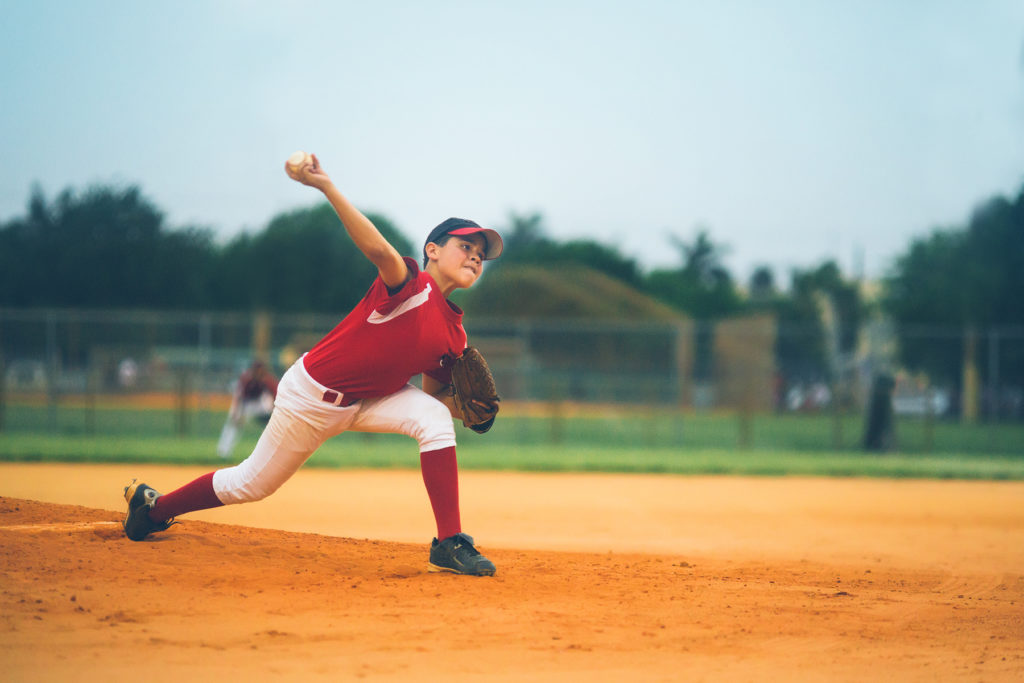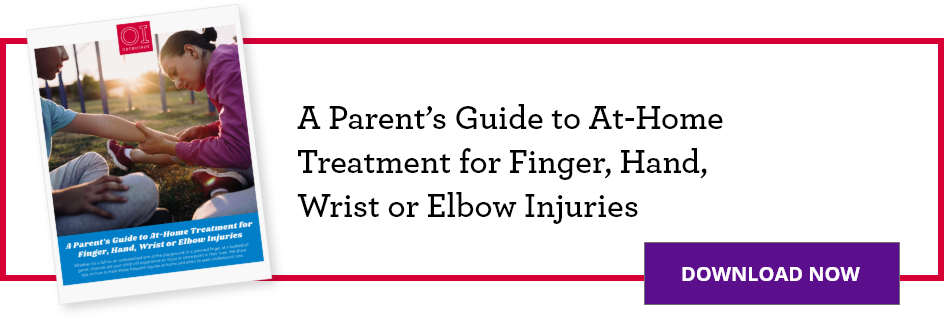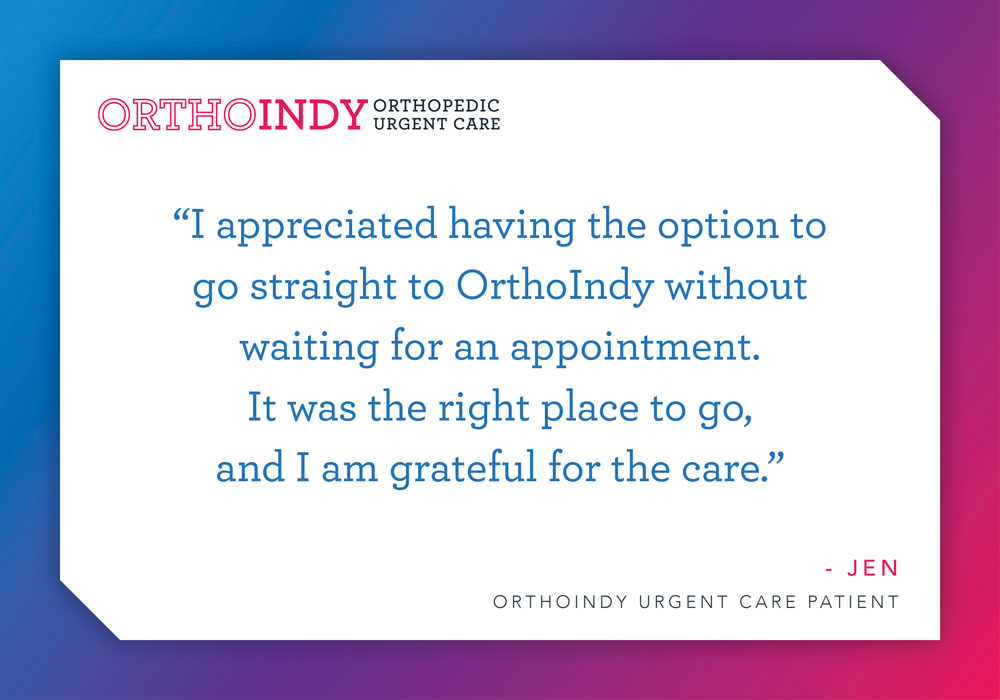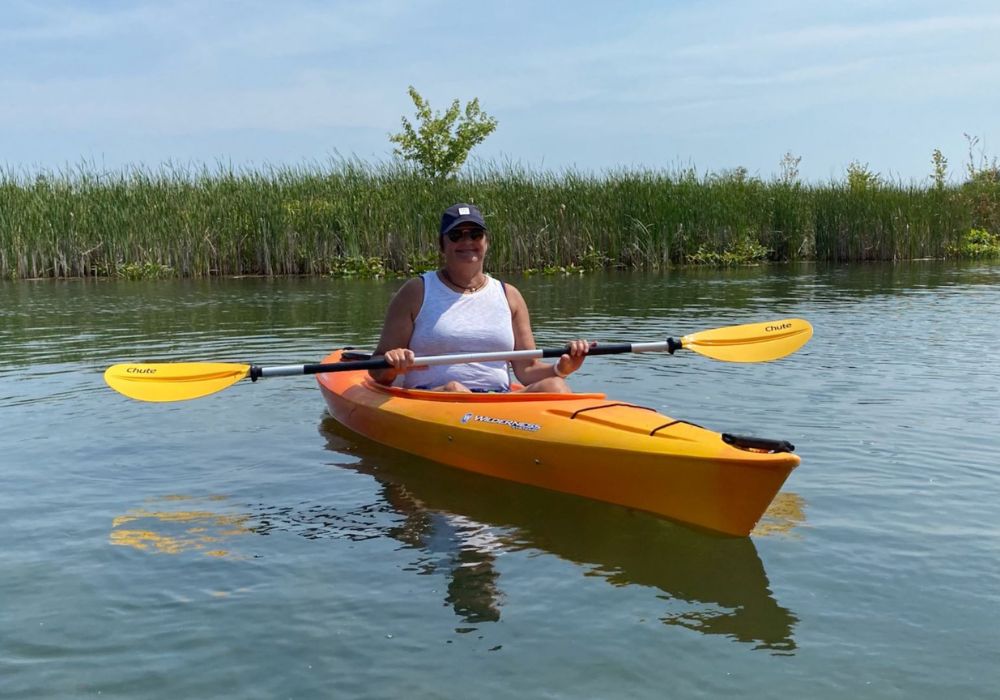THIS POST IS PART OF THE ULTIMATE GUIDE TO SPORTS MEDICINE
Overhand throwing causes extremely high stresses on the elbow. Unlike an acute injury that results from a fall or collision, with throwing athletes such as baseball pitchers, repeated high stresses to the elbow can lead to serious overuse injuries.
An overuse injury happens gradually. Most times, overuse injuries develop when an athletic movement is repeated without enough time to rest and heal in between games or practices.
Anatomy
The elbow joint is where three bones in your arm meet: the upper arm bone (humerus) and the two bones in your forearm (radius and ulna). It is a combination hinge (the part of the joint that lets the arm bend and straighten) and pivot (the part that lets the lower arm twist and rotate) joints.
At the upper end of the ulna is the olecranon, the bony point of the elbow. On the inner and outer sides of the elbow, thicker ligaments (collateral ligaments) hold the elbow joint together and prevent dislocation. The ligament on the inside of the elbow is the ulnar collateral ligament (UCL). It runs from the inner side of the humerus to the inner side of the ulna, and must withstand extreme stresses as it stabilizes the elbow during overhand throwing.
Several muscles, nerves and tendons cross at the elbow as well. The flexor/pronator muscles of the forearm and wrist begin at the elbow and also stabilize the elbow during throwing. The ulnar nerve crosses behind the elbow and controls the muscles of the hand.
Common elbow injuries
- Flexor Tendinitis: The flexor/pronator tendons are irritated and inflamed where they attach to the humerus bone.
- Ulnar Collateral Ligament (UCL) Injury: This can range from minor damage and inflammation to a complete ligament tear.
- Valgus Extension Overload (VEO): During the throwing motion, the olecranon and humerus bones are twisted and forced against each other. Over time, this can lead to VEO; a condition where the protective cartilage on the olecranon is worn away and abnormal overgrowth of bone (bone spurs or osteophytes) develops.
- Olecranon Stress Fracture: The olecranon is the most common location for stress fractures in throwers. Stress fractures occur when muscles become fatigued and are unable to absorb added shock, causing the muscles to transfer the overloaded stress to the bone, causing a tiny crack.
- Ulnar Neuritis: The ulnar nerve is stretched repeatedly around the bony bump at the end of the humerus. The nerve can slip out of place causing painful snapping. Throwers will notice pain resembling electric shocks starting at the inner elbow and running along the nerve as it passes into the forearm.
What causes an elbow injury?
Although elbow injuries most commonly occur in pitchers, they can be seen in any athlete who participates in repetitive overhand throwing. When athletes throw repeatedly at a high speed the repetitive stress leads to a wide range of overuse injuries. Problems most often occur at the inside of the elbow because considerable force is concentrated over the inner elbow during throwing.
In many cases, pain will resolve when the athlete stops throwing and it’s uncommon for these injuries to occur in non-throwers.
Symptoms of an elbow injury
- Pain on the inside of the elbow during or after throwing
- Pain during sleep
- Swelling (VEO)
- Limited ability to throw or decreased flowing velocity
- Numbness or tingling of the elbow, forearm or hand
How is an elbow injury diagnosed?
To determine whether you have a throwing injury of the elbow, your physician will ask you for a complete medical history and when you started experiencing elbow pain, have you describe your symptoms and conduct a physical examination. An X-ray, MRI or CT scan may be necessary to identify the specific injury related to the elbow.
Make an appointment with a hand, wrist or elbow specialist
How is an elbow injury treated?
In most cases treatment for throwing injuries of the elbow can be treated with nonsurgical methods such as:
- Short period of rest
- Physical therapy
- Change in throwing mechanics
- Anti-inflammatory medications such as ibuprofen
If painful symptoms are not relieved by nonsurgical methods and an athlete desires to continue throwing, surgical treatment may be necessary. Surgical options include:
- Arthroscopy: Bone spurs on the olecranon and any loose fragments of bone or cartilage within the elbow joint can be removed arthroscopically. During arthroscopy, the surgeon inserts a small camera into the elbow joint and uses images to guide miniature surgical instruments.
- UCL reconstruction: Athletes with an unstable or torn UCL are candidates for this surgical procedure often referred to as “Tommy John surgery”. To surgically repair the UCL and restore elbow strength and stability, the ligament is reconstructed when the physician replaces the torn ligament with a tissue graft. This graft acts as a scaffolding for a new ligament to grow on. Most times the ligament can be reconstructed using one of the patient’s own tendons.
- Ulnar nerve anterior transposition: With ulnar neuritis the nerve can be moved to the front of the elbow to prevent stretching or snapping. This is called an anterior transposition of the ulnar nerve.
Learn more about hand, wrist and elbow treatment at OrthoIndy.
How do I recover from an elbow injury?
If nonsurgical treatment is effective, the athlete can usually return to throwing in six to nine weeks.
If surgery is required, recovery will be very different depending upon the procedure performed. If UCL reconstruction is performed, it may take six to nine months or more to return to competitive throwing.
Schedule an appointment
Your well-being is important to us. Click the button below or call us to schedule an appointment with one of our orthopedic specialists. If your injury or condition is recent, you can walk right into one of our OrthoIndy Urgent Care locations for immediate care. For rehabilitation and physical therapy, no referral is needed to see one of our physical therapists.






